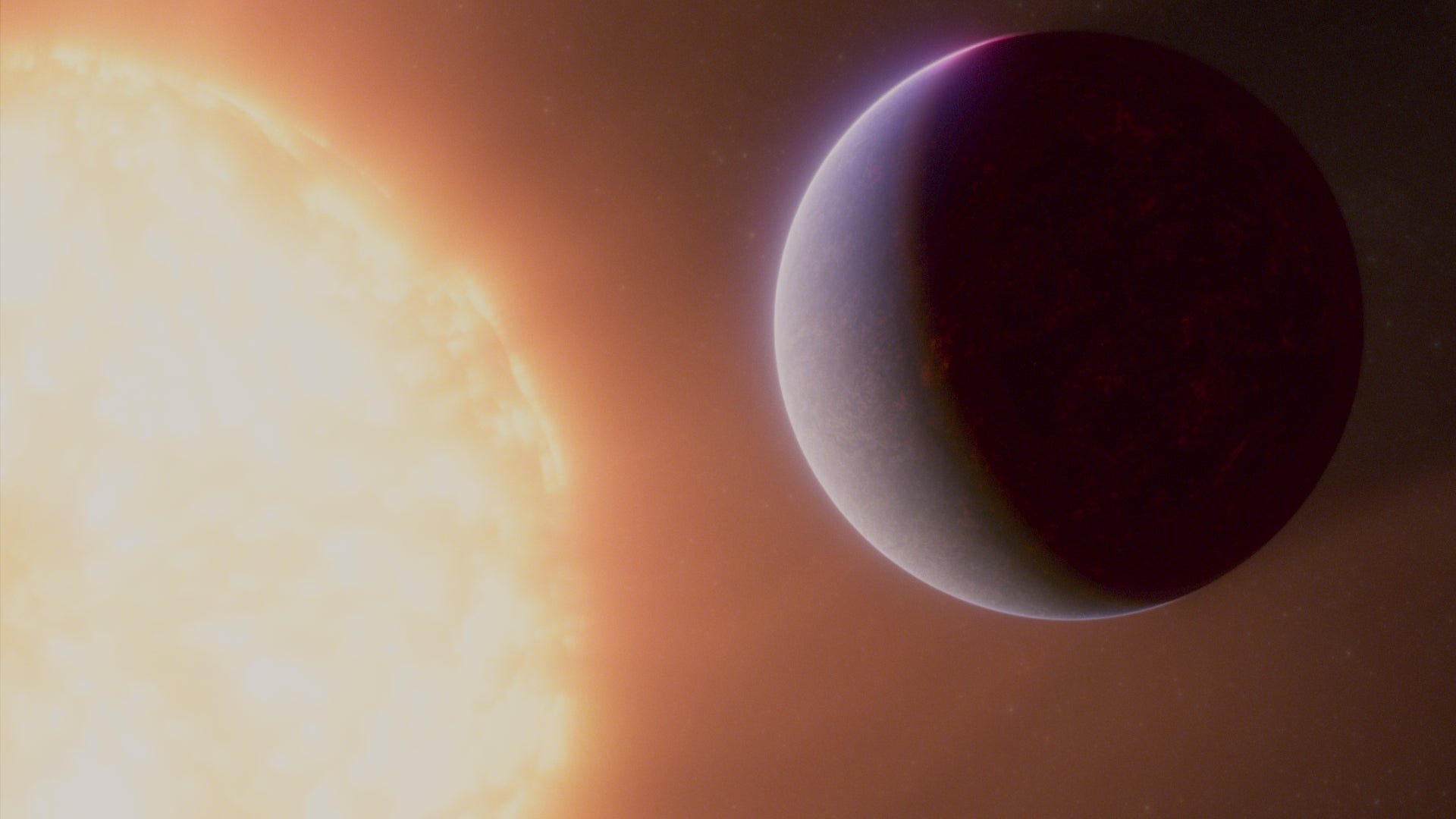The Webb Space Telescope found a nearby planet with an atmosphere
A planet just 41 light-years from Earth has a volatile atmosphere and is covered in a magma ocean

Scientists have spotted a rocky exoplanet with a possible atmosphere, which they believe may be burbling out from a magma ocean on the distant world.
Suggested Reading
The planet is called 55 Cancri e. It’s located about 41 light-years from Earth and, per the team’s observations, has a layer of gases above its surface that may constitute an atmosphere. 55 Cancri e is a super-Earth, a rocky body roughly 8.8 times the size of our world with an equilibrium temperature of about 2,000 Kelvin, or 3,140 degrees Fahrenheit. The team’s findings were published today in Nature.
Related Content
“55 Cancri e is one of the most enigmatic exoplanets,” said Brice-Olivier Demory, an astrophysicist at the University of Bern and co-author of the study, in a university release. “Despite enormous amounts of observing time obtained with a dozen of ground and space facilities in the past decade, its very nature has remained elusive, until today, when parts of the puzzle could finally be put together thanks to the James Webb Space Telescope (JWST).”
Webb has been conducting scientific operations from a point about one million miles from Earth for nearly two years, yielding plenty of insights into galaxy formation, ancient light sources, distant exoplanets, and even the other worlds in our own solar system. The team studied the exoplanet using Webb’s Near-Infrared Camera (NIRCam) and Mid-InfraRed Instrument (MIRI), its two main imagers. “The measurements rule out the scenario where the planet is a lava world shrouded by a tenuous atmosphere made of vaporized rock,” the researchers wrote in their study, “and indicate a bona fide volatile atmosphere likely rich in [carbon dioxide] or [carbon monoxide].”
The planet is tidally locked, meaning one of its sides faces its host star at all times (like how the Moon’s near side always faces Earth). But measurements of 55 Cancri’s dayside temperature turned out cooler than the team expected—evidence that an atmosphere is distributing heat around the planet.
“There have been many observations of atmospheres on exoplanets, but all of them have massive, hydrogen-dominated atmospheres,” said Renyu Hu, a planetary scientist at NASA’s Jet Propulsion Laboratory and the study’s lead author, in an email to Gizmodo. “Here we finally obtained an observation of an atmosphere surrounding a rocky exoplanet.”
Though 55 Cancri e is not hospitable for life as we know it, it is a useful case study for showing how the Webb telescope can characterize distant worlds without directly imaging them. Rocky exoplanets, as opposed to gigantic gas giants, are very difficult to image directly; they aren’t bright like stars and are much less massive. Instead, scientists discern aspects of an exoplanet’s makeup using the stars they orbit. The recent research team identified the possible atmosphere on 55 Cancri e by carefully measuring the amount of light that came from the planet as it orbited its star. The next-generation Habitable Worlds Observatory, should it get off the ground, will make it much easier to discern aspects of distant exoplanets, potentially boosting scientists’ ability to find life beyond Earth.
Astronomers have documented more than 5,000 exoplanets to date. These worlds need to be looked at closely for researchers to separate the wheat from the chaff in terms of astrobiology; even looking at the hostile worlds can shed light on how planets evolve and what sort of planetary diversity exists in the cosmos.
In March 2023, a different team of researchers found that the rocky planet TRAPPIST-1b does not have an atmosphere, perhaps because its close proximity to its host star zaps any that the planet may develop. The TRAPPIST-1 system is compelling for astrobiologists because several of its worlds sit in the so-called “habitable zone” that make worlds neither too hot nor too cold for life as we know it to persist.
Atmospheres are crucial for supporting life, so as interest in the TRAPPIST-1 system wanes, 55 Cancri e is emerging as a fascinating candidate for astrobiological studies.